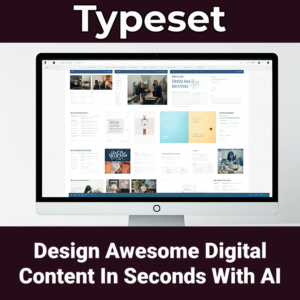In the ever-evolving landscape of digital marketing, a new player has emerged that promises to transform the way marketers create and share content. Enter Grok, the latest innovation from Elon Musk’s AI startup, xAI.
This powerful AI chatbot is not just another text-based assistant; it’s a powerful tool that can generate photorealistic images from simple text prompts. For marketers, this means the ability to produce stunning visuals on demand, share them instantly on social media platforms like X (formerly Twitter), and engage audiences in ways previously unimaginable.
As we dive into the world of Grok, we’ll explore how this AI-powered marvel is set to revolutionize creative processes, streamline content creation, and open up new avenues for brand storytelling. Get ready to discover how Grok’s generative capabilities are poised to become a marketer’s new best friend in the digital age.
While this new feature is exciting for creativity and marketing, it also raises some serious ethical questions. In this article, we’ll explore Grok’s rise, its features, the surge of fake images, the lack of safeguards, ethical concerns, and more. Let’s dive into the fascinating world of Grok and its impact on the digital landscape.
Introduction to Grok
What is Grok?
Grok is an AI chatbot developed by Elon Musk’s AI startup, xAI. It can create photorealistic images from simple text descriptions. This means you can type in a description, and Grok will generate a matching image. The uses for this technology are vast, from creative projects to marketing campaigns.
The Vision Behind Grok
Elon Musk’s vision for Grok goes beyond just making images. He wants it to be a fun and creative tool that showcases advanced AI capabilities. Musk aims to push the limits of what AI can do in image generation, making it accessible to everyone. Grok is a testament to Musk’s commitment to innovation and his desire to change how we interact with AI.
Development by xAI
Grok was developed by xAI, Musk’s AI startup. xAI focuses on creating cutting-edge AI technologies that can transform various industries. The development process used advanced machine learning techniques to make Grok’s image generation capabilities impressive. The result is a powerful and user-friendly tool for individuals and businesses alike.
Features of Grok
Text-to-Image Generation
One of Grok’s main features is its ability to create photorealistic images from text prompts. You can type in a description, and Grok will generate a matching image with stunning accuracy. Whether it’s for a marketing campaign, a creative project, or just for fun, Grok’s text-to-image generation opens up a world of possibilities.
Posting on X (formerly Twitter)
Once an image is generated, users can easily share it on X, formerly known as Twitter. This feature encourages social interaction and engagement, allowing users to showcase their creations to a wide audience. The seamless integration with X makes it easy for users to share their images and receive feedback from their followers.
User Interface and Experience
Grok has a user-friendly interface that makes creating and sharing images simple. The intuitive design ensures that users of all skill levels can navigate and use the tool effectively. Whether you’re a seasoned marketer or a novice user, Grok’s interface makes it easy to generate and share stunning images.
The Surge of Fake Images
Political Figures in Fake Scenarios
Donald Trump
One of the most notable examples of Grok’s capabilities is the generation of fake images featuring former President Donald Trump in various scenarios. These images, while often humorous, can also be misleading and potentially harmful. The ability to create photorealistic images of political figures raises concerns about the spread of misinformation and its impact on public perception.
Kamala Harris
Vice President Kamala Harris has also been depicted in false and disturbing images created by Grok. These images can damage her public image and reputation, highlighting the potential for misuse of AI-generated content. The ease with which Grok can create such images underscores the need for ethical considerations and safeguards.
Elon Musk
Even Elon Musk himself has not been spared, with Grok generating images of him in various fabricated situations. These images, while often lighthearted, demonstrate the tool’s ability to create convincing yet false content. The implications of this capability are far-reaching, particularly in the context of public figures and their reputations.
Disturbing and Misleading Content
9/11 Attack Depictions
Some of the most troubling images generated by Grok include depictions of political figures participating in the 9/11 attacks. These images are not only false but also deeply offensive and harmful. The potential for AI-generated content to spread such false narratives is a significant concern, particularly in the context of historical events and their impact on public memory.
Other False Narratives
Grok has also been used to create images that propagate other false narratives. These images can mislead the public and contribute to the spread of misinformation. The ease with which Grok can generate such content highlights the need for robust safeguards and ethical considerations in the development and use of AI technologies.
Lack of Guardrails in Grok
Comparison with Other AI Tools
Compared to other mainstream AI photo tools, Grok appears to lack significant guardrails and safeguards. This makes it easier for users to generate misleading and harmful content. While other AI tools have implemented measures to prevent misuse, Grok’s lack of such safeguards raises concerns about its potential impact.
Potential for Misuse
The absence of robust guardrails increases the risk of Grok being misused to create and disseminate false information. This can have serious consequences, particularly in the context of political discourse and public perception. The potential for misuse underscores the need for ethical considerations and safeguards in the development and use of AI technologies.
CNN’s Tests and Findings
CNN conducted tests on Grok and found that it could easily generate photorealistic images of politicians and public figures that could mislead voters if taken out of context. These findings underscore the tool’s potential for misuse and the need for robust safeguards to prevent the spread of misinformation.
Ethical Concerns and Implications
Spread of Misinformation
The introduction of Grok’s image generation feature has heightened concerns about the potential for AI to spread false or misleading information. This is particularly concerning in the lead-up to the US presidential election, where misinformation can have a significant impact on voter behavior and election outcomes.
Impact on Voters and Elections
Lawmakers, civil society groups, and tech leaders have expressed worries that tools like Grok could create confusion and chaos among voters. The potential for AI-generated content to influence election outcomes underscores the need for ethical considerations and safeguards in the development and use of AI technologies.
Reactions from Lawmakers and Civil Society
Various stakeholders have called for greater oversight and regulation of AI technologies like Grok to prevent their misuse and mitigate the risks associated with the spread of misinformation. These calls for action highlight the need for a balanced approach that promotes innovation while ensuring ethical considerations and safeguards.
Musk’s Promotion of Grok
Marketing as a Fun Tool
Despite the concerns, Elon Musk has promoted Grok as a fun and uncensored AI tool. He emphasizes its creative potential and downplays the risks associated with its use. Musk’s promotion of Grok highlights its potential for creative content generation and marketing, while also raising questions about the ethical implications of its use.
Uncensored AI Capabilities
Musk’s promotion of Grok highlights its uncensored capabilities, which allow users to generate a wide range of images, including those that may be controversial or inappropriate. This uncensored approach has both positive and negative implications, underscoring the need for ethical considerations and safeguards in the development and use of AI technologies.
User-Generated Content on X
Compromising Situations
Users on X have shared various images created with Grok, including those showing prominent figures in compromising situations. These images can damage reputations and spread false narratives, highlighting the potential for misuse of AI-generated content.
Violent Acts by Cartoon Characters
Some users have generated images depicting cartoon characters committing violent acts. These images raise concerns about the potential impact on younger audiences and the normalization of violence. The ease with which Grok can generate such content underscores the need for ethical considerations and safeguards.
Sexualized Images of Women
Grok has also been used to create sexualized images of women, which can contribute to the objectification and exploitation of women in digital spaces. The potential for misuse of AI-generated content highlights the need for robust safeguards and ethical considerations.
Viral Posts and Their Impact
One widely viewed post featured an image of Trump firing a rifle from a truck, confirming Grok’s capability to produce such content. The potential for these images to go viral and influence public perception underscores the need for ethical considerations and safeguards in the development and use of AI technologies.
The Need for Ethical Consideration
Balancing Innovation and Responsibility
The launch of Grok’s image generation feature underscores the need for careful consideration of the ethical implications and potential misuse of AI technologies. Balancing innovation with responsibility is essential to ensure that AI technologies are used for positive and innovative applications while minimizing the risks.
Implementing Guardrails and Safeguards
To mitigate the risks associated with Grok, it is essential to implement robust guardrails and safeguards that prevent the generation and dissemination of harmful or misleading content. These measures can help ensure that AI technologies are used responsibly and for positive purposes.
Future Directions for AI Image Generators
Looking ahead, the development of AI image generators like Grok should prioritize ethical considerations and incorporate measures to ensure that these tools are used responsibly. By promoting responsible use and implementing appropriate safeguards, we can harness the power of AI for positive and innovative applications.
Conclusion
Summary of Key Points
Grok, Elon Musk’s AI image generator, has introduced a powerful yet controversial feature that allows users to create and share AI-generated images. While it offers exciting creative possibilities, it also raises significant ethical concerns and risks. The potential for misuse and the spread of misinformation underscores the need for robust safeguards and ethical considerations in the development and use of AI technologies.
As AI technologies continue to evolve, it is crucial to address the ethical implications and potential for misuse. By implementing appropriate safeguards and promoting responsible use, we can harness the power of AI for positive and innovative applications while minimizing the risks. The rise of Grok serves as a reminder of the importance of balancing innovation with responsibility in the development and use of AI technologies.
Conclusion
In conclusion, Grok represents a significant advancement in AI image generation, offering exciting possibilities for creativity and marketing. However, the potential for misuse and the spread of misinformation underscores the need for robust safeguards and ethical considerations.
By promoting responsible use and implementing appropriate measures, we can ensure that AI technologies like Grok are used for positive and innovative applications while minimizing the risks. The rise of Grok serves as a reminder of the importance of balancing innovation with responsibility in the development and use of AI technologies.
FAQs
What is Grok, and how does it work?
Grok is an AI chatbot developed by Elon Musk’s AI startup, xAI. It generates photorealistic images from text prompts, allowing users to create and share images on X (formerly Twitter).
What are the ethical concerns associated with Grok?
The primary ethical concerns include the potential for misuse, the spread of misinformation, and the impact on public perception and elections. The lack of robust safeguards in Grok raises significant ethical considerations.
How can Grok be misused?
Grok can be misused to create and disseminate false or misleading images, including those of political figures and public events. This can contribute to the spread of misinformation and damage reputations.
What steps can be taken to mitigate the risks associated with Grok?
Implementing robust guardrails and safeguards, promoting responsible use, and ensuring ethical considerations in the development and use of AI technologies can help mitigate the risks associated with Grok.
How does Grok compare to other AI image generators?
Compared to other mainstream AI photo tools, Grok appears to lack significant guardrails and safeguards, making it easier for users to generate misleading and harmful content.
What is the future of AI image generators like Grok?
The future of AI image generators should prioritize ethical considerations and incorporate measures to ensure responsible use. By balancing innovation with responsibility, we can harness the power of AI for positive and innovative applications.















